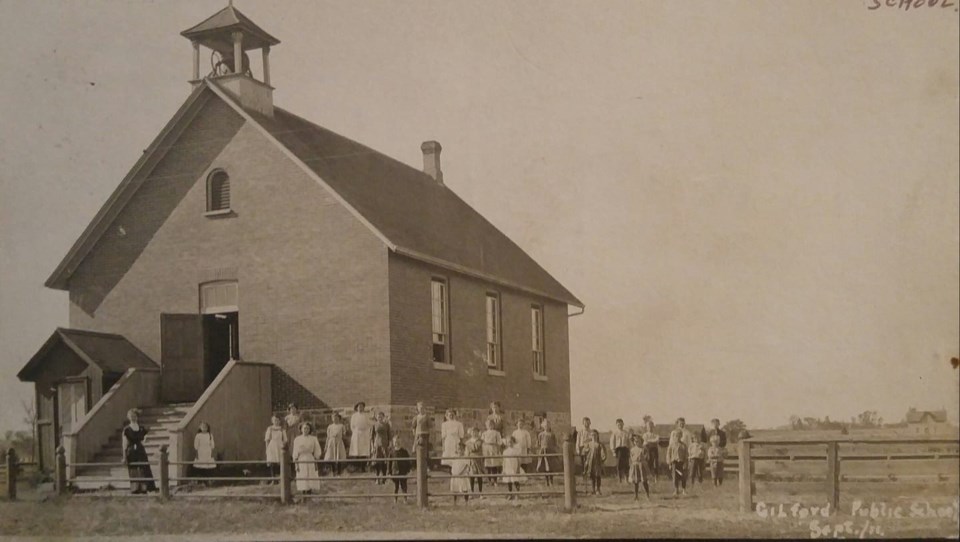Not too long ago, the former Gilford School — now a private residence — celebrated 125 years.
It’s a tangible reminder of the village’s past, even as modern homes replace farms.
Schooling in Gilford dates to the early 1860s. Farms were flourishing, a sawmill employed local men, and connection by rail brought prosperity. Gilford was growing. Initially, the community’s youth were educated — when they weren’t needed on the farm — in a private home under the tutelage of Matilda Wilson.
As Gilford grew in both size and prosperity, it became apparent a dedicated school was urgently needed. In 1868, Gilford’s first school was built on the east side of Breard Street. The land and lumber were donated, and the building was raised by volunteer labour. The schoolhouse was quirky and somewhat primitive; it was dingy, with only two windows for illumination, and cold, with little in the way of insulation and a single wood stove for heating, and the teacher marked her lessons on pine boards painted over with black paint in lieu of chalkboards.
Students entered the school through a woodshed at the front of the building. Local farmers ensured the shed was well stocked with wood, but it was the job of the teacher to arrive before class and light the stove.
Sarah McLean was the first teacher. She, like most who followed, was a young woman, not much older than some of the students she taught. Most came from out of the area, boarded with a local family and, after a year or two, left the post, often to get married.
The school term started on the third Monday in August, but many kids started later. For most children, especially boys who might be needed on the farm, school was a privilege. Farm work took precedence. Many boys would only start showing up in late fall after the farm had largely been put to rest for the year, and then would pull out early in spring for plowing and planting. Many left school around the age of 12 or 14 (depending on family circumstances), at which time they were expected to work alongside the men.
By the 1890s, the dark and cold schoolhouse was growing long in the tooth and no longer big enough to accommodate the growing class sizes. In 1897, a new school — this one, a handsome brick structure with a full basement — was built by Harry Sleight on the north side of Main Street. This was still a one-room school, but it was far larger. And, with a furnace in the basement, it was also far warmer.
Greatest space allowed the student body to be divided into two classes, with a senior and a junior division in both. This was required because Gilford was at its apogee and the average attendance was 65.
For more than six decades, the sounds of the school bell ringing and children playing in the school yard were familiar in Gilford. That ended in 1960 with the opening of a larger, consolidated school to which students would be bused. The Gilford school, like other one-room schoolhouses across the region, was closed. It fell to Ethel Campbell to dismiss students for the final time.



